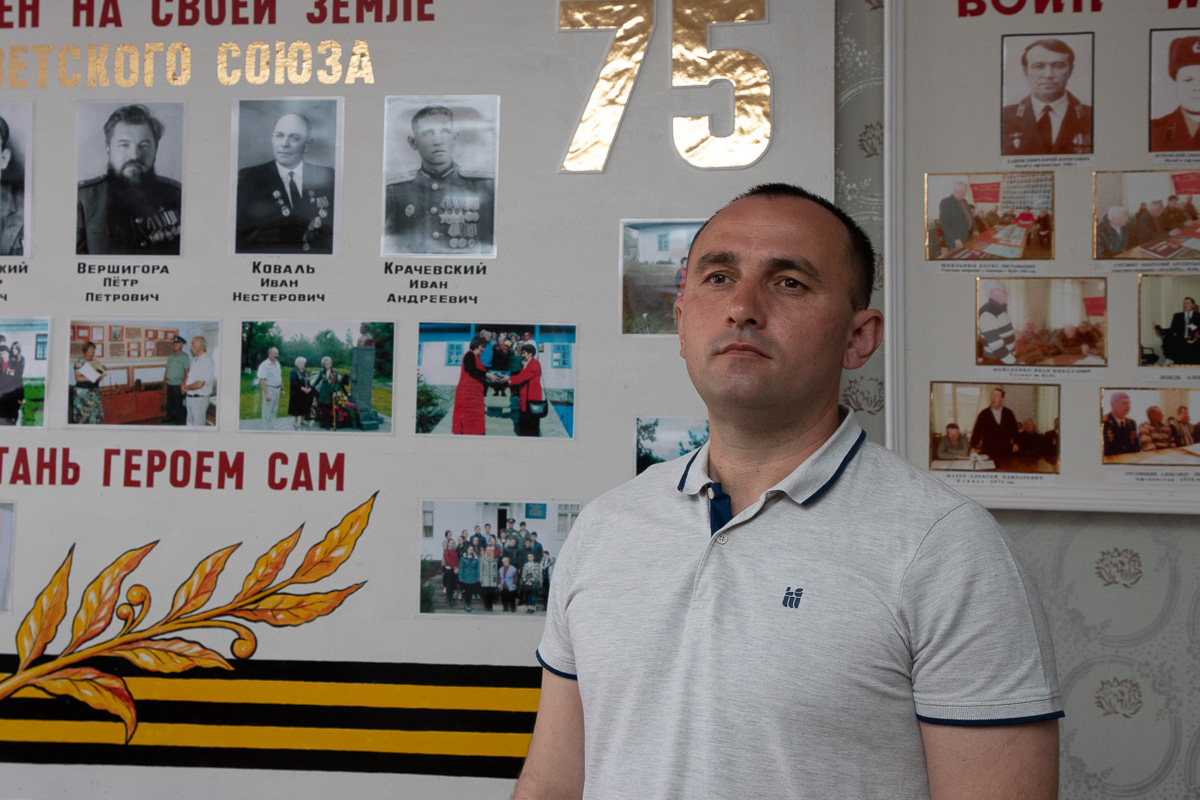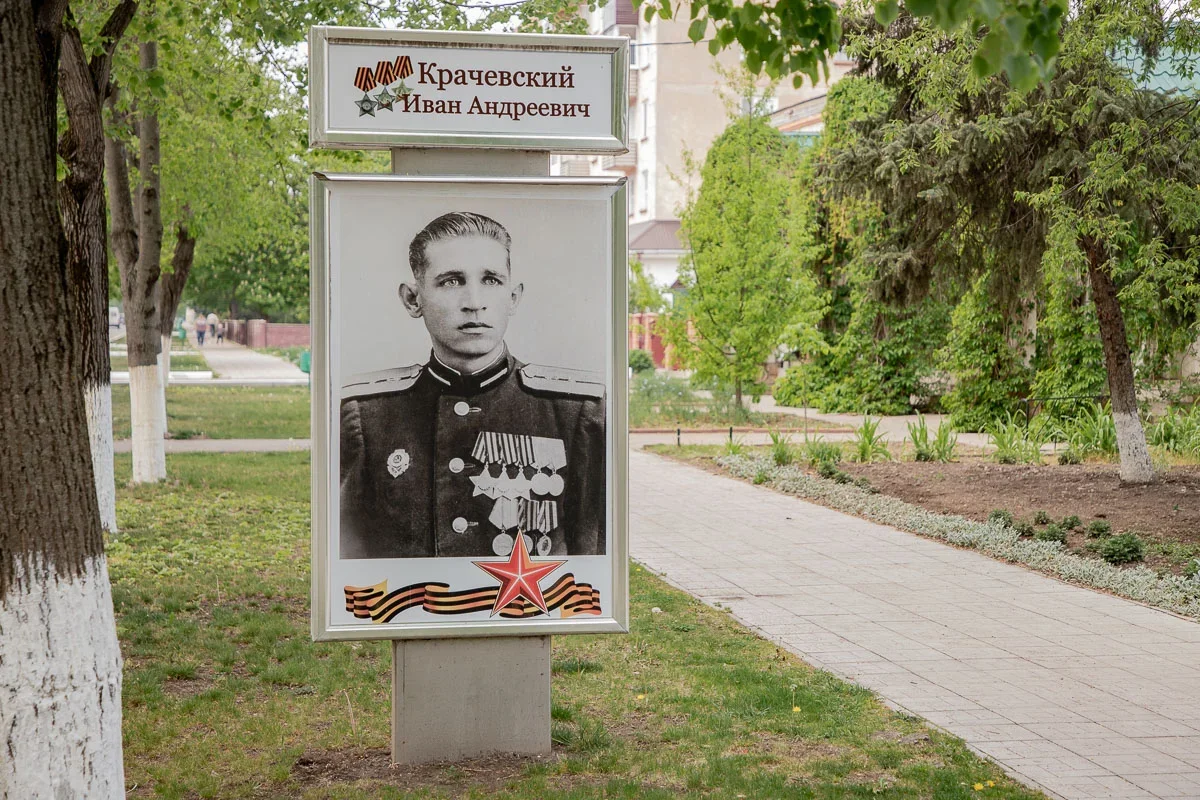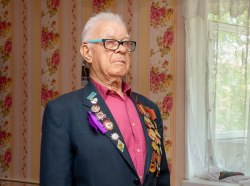In Kamenka, there was completed the construction of Heroes Square. It is located in the city center next to the tall oak tree that was planted back in the middle of the last century by Hero of the Soviet Union Peter Vershigora, the legendary partisan leader, general, director and writer from Severinovka.

A stele with niches where there will be placed bas-reliefs of heroes from the Kamenka District is the main architectural detail of the square. There will be Peter Vershigora, Ivan Soltys, Ivan Koval, Fedor Zharchinsky and Ivan Krachevsky - the full knight of the Order of Glory. Four of them were born in Pridnestrovie, there were numerous publications and videos devoted to them, museums of their memory were opened in their native villages. And so Krachevsky moved to Kamenka after the war.

For a long time, we did not know a lot about the history of his military merits: the veteran did not like to talk about his experiences in the war. And only in recent years, thanks to open access to the documents of the Russian State Military Historical Archive, details have become known that Ivan Krachevsky was silent about. Novosti Pridnestrovya visited the north of Pridnestrovie, where they met with the descendants and friends of a foot reconnaissance fighter, who was awarded all three degrees of the Order of Glory. They told us his story, more similar to the screenplay about the Great Patriotic War.
The Order of Glory
This military award appeared in the middle of the war and was the most honorable one among the soldiers and sergeants of the Red Army. It was awarded for exceptional service on the battlefield - the order had three degrees, rewarding was only carried out in ascending order, starting with the least significant – 3rd degree.

The colors of the Order of Glory ribbon repeat the colors of the ribbon of the Russian Imperial Order of St. George, which was surprising to say the least during Stalin`s reign. Nevertheless, the connection with the highest military award of the Russian Empire is obvious. Over time, holders of three degrees were equated with the Heroes of the Soviet Union in status, which also emphasizes the importance of the Order of Glory.
An interesting fact: there were 11,739 people who became Heroes of the Soviet Union, while 2,672 became full knights of the Order of Glory for the entire period of the Great Patriotic War.
In Pridnestrovie, there were 8 veterans with three degrees of the order: 3 of them were born here, 5 moved here after the war. One of them is Ivan Andreevich Krachevsky.
“Did Not Feel Fear”
“He did not like to think of the war. All these wounds, all that he experienced ... Ivan did not want to tell about this. Yet if he did start to share his memories, he fell silent right away with tears in his eyes,” the war veteran from Kamenka Evgenia Poloz recalls.

She was well acquainted with Ivan Andreevich. Their families were friends: her husband is also a front-line soldier, therefore they found a common ground with Krachevsky at once. Evgenia Poloz says that whenever the conversation turned to war, Ivan Krachevsky could not help feeling choked with emotion.
The hero`s descendant lives in Kamenka.

Ivan Krachevsky (that's his name) does not remember his grandfather - a veteran passed away before his grandson was born. He stores photographs and military awards of his ancestor: medals "For Military Merit" (double award), "For the Defense of the Caucasus" and all three Orders of Glory - silver, silver with gilding and gold ones. Ivan says: the history of his grandfather is stored in these orders and medals. We must be able to read it, recreating events from the stories of parents, archival documents and rare recordings of memories.

“He was a very brave man. Studying the documents of his personal file, you are amazed that a person has no fear. Absolutely fearless! He may have had fear, but he didn’t use it,” Yuri Zhora, Kamenka citizen, head of the district Veterans Council and Chairman of the Kamenka branch of the Pridnestrovian People’s Forum says.

Yuri Zhora had been collecting information about the military merits of Krachevsky for several years. It made it possible to supplement the facts of his biography known only to close relatives and to understand what kind of soldier he was.
Fight with Edelweiss and Excellent secret service agent
Ivan Krachevsky is originally from Stavropol. He was born on November 25, 1925 in the Vorontsovo-Alexandrovka (now Zelenokumsk) village. After school, he dreamed of becoming a geologist, but the war cut his plans. At the Komsomol call, he built defensive structures on the Terek River, then he became an apprentice locksmith in the Central Mechanical Workshop in Magobek, which served Caucasian oil fields and repaired equipment for the front. In August 1942, Krachevsky was drafted into the army and enlisted in a platoon of foot reconnaissance. He turned out to be at the front in a couple of weeks: the units equipped with recruits were urgently sent to cover the front.
In September 1942, the Edelweiss mountain rifle division, which was considered one of the elite units of the Wehrmacht, spearheads towards the Caucasus. Near the village of Zamankul, on the outskirts of the city of Ordzhonikidze of the North Ossetian Autonomous Soviet Socialist Republic, it was stopped by a division, almost entirely composed of conscripts. Nevertheless, the battle lasted 11 days, Krachevsky later recalled.
“On the Twelfth Day We Were Replaced – There Were 6 People Left from Our Platoon,” He Said After the War.
It seems that the senior comrades tried to protect the young fighter: Krachevsky received his first medal “For Military Merit” for bringing food to the front line under enemy fire. But then the dangerous everyday life of the secret service agent followed, facing enemy heavy infantry, obtaining information, capturing the "tongue". In the fall of 1943 he received a second medal – this time, for courage and brave during the reconnaissance mission.
By the beginning of 1944, Ivan Krachevsky, already an experienced fighter, goes on the most dangerous missions. The Excellent secret service agent badge is corroboration of that fact.

“Once, he and his partner waited for the enemy detachment for a whole day,” Krachevsky`s grandson says. They have been lying under the snow all night. In the morning, when they saw a group of enemy soldiers, they had to act. But the secret service agents could not get up - they froze to the ground. They had to dig themselves up to complete a combat mission.”
Two Months - Three Orders
Krachevsky showed exceptional fighting qualities in Western Ukraine in the spring and summer of 1944. On the night of May 30, a clearing group of 5 people made their way over the front line, but stumbled upon superior enemy forces. Ivan fought alone, covering up his comrades` retreat. For this he received the Order of Glory of the 3rd degree.
A month later, on the night of July 11, Krachevsky with secret service agents broke into the enemy’s trenches and fought at close quarters with the enemy. He neutralized the machine gunner and captured the valuable “tongue”. He received the Order of Glory of the 2nd degree.
A few weeks later he participated in the operation, for which he later received the Order of Glory of the 1st degree. This is how it was: on July 27, 1944, in the battles for Berezuv village, Pechenezhinsky District of the Stanislavsky (now Ivano-Frankovsk) region of Ukraine, Sergeant Krachevsky participated in blocking the withdrawal of the enemy group. With his squad, he quietly sneaked behind enemy lines and set up an ambush. When the enemy unit passed by, Krachevsky threw a grenade and opened fire from a machine gun. Many enemy soldiers surrendered surprised - Krachevsky disarmed and brought to the headquarters 14 people. Although he was only recommend for a decoration in 1945.
Ivan Andreevich`s fate intertwined with Western Ukraine for a long time. After the Victory, which the secret service agent met near the Czech capital of Prague, Krachevsky is sent to liquidate the gangs that fought alongside Hitler. He also takes training courses for commanders, receives an officer rank and in 1953, for health reasons, ends his military career with the rank of captain. After the resignation, he moved to Kamenka with his wife.
In the post-war years, Ivan Krachevsky worked at the Kamenka Cannery. On the initiative of the regional military commissariats, in his honor there was opened a memorial plaque on the facade of the building of the enterprise in 2015 - Ivan Krachevsky passed away in 1974.

There are installed light boxes with portraits of Heroes of the Soviet Union from the Kamenka District on the main street of the city. With them, Ivan Krachevsky, holder of the Order of Glory of three degrees, looks at descendants living 75 years after the largest war in the history of mankind.









